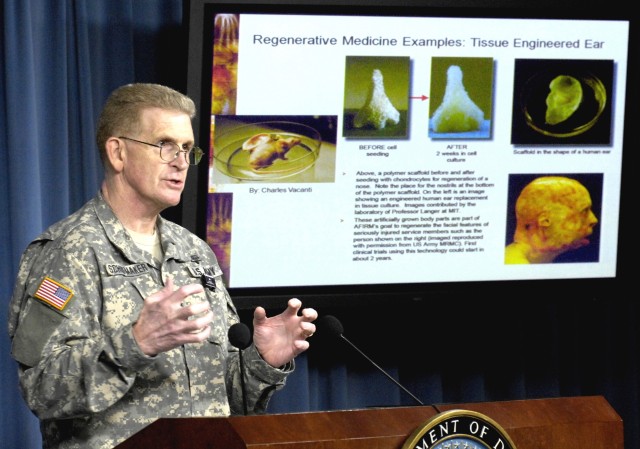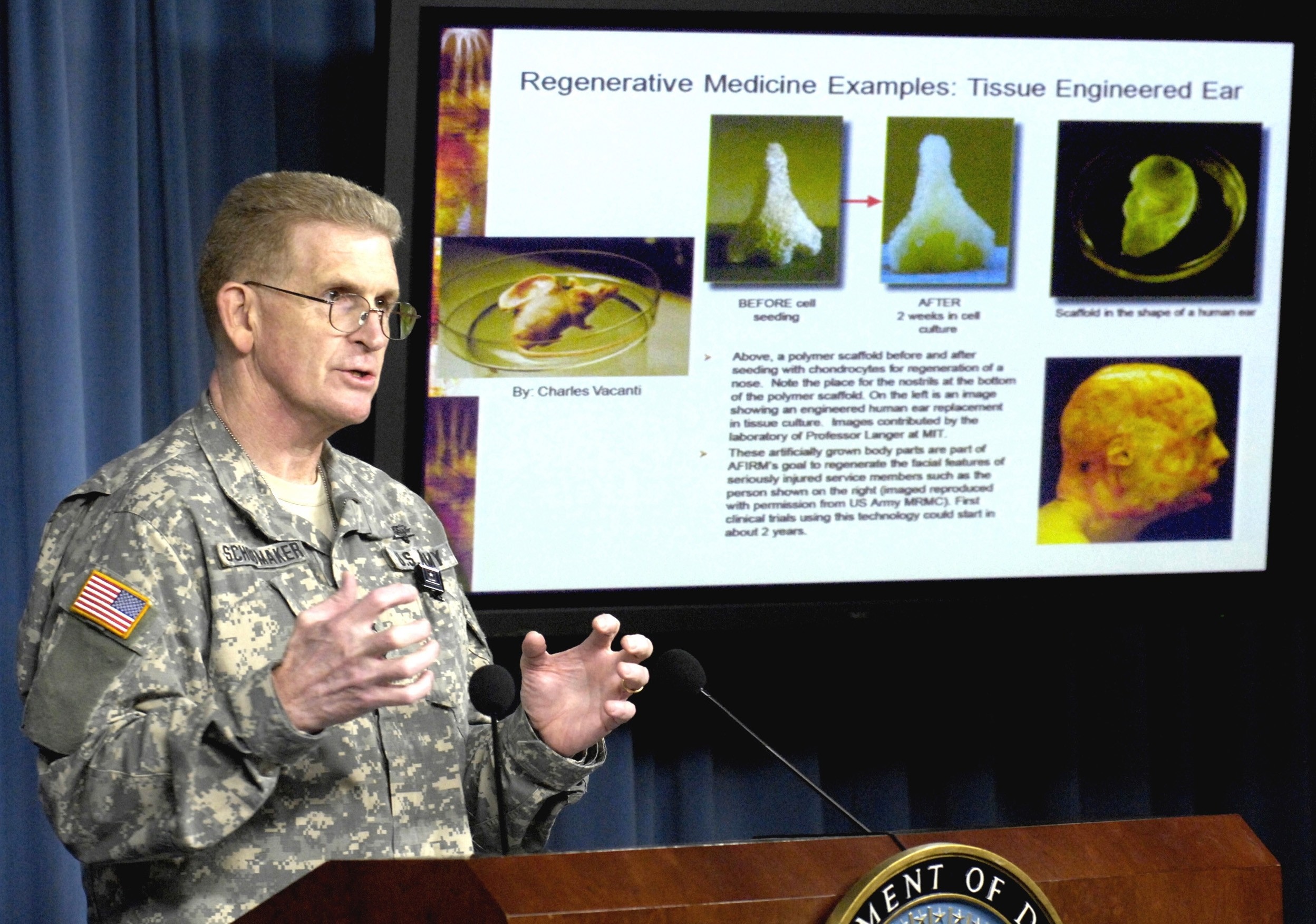The Defense Department has launched a five-year, Army-led cooperative effort to leverage cutting-edge medical technology to develop new ways to assist servicemembers who've suffered severe, disfiguring wounds.
The newly established Armed Forces Institute of Regenerative Medicine, known by the acronym AFIRM, will serve as the military's operational agency for the effort, Dr. S. Ward Casscells, the assistant secretary of defense for health affairs, told reporters at a Pentagon news conference.
A key component of the initiative is to harness stem-cell research and technology to use a patient's natural cellular structure to reconstruct new skin, muscles and tendons, and even ears, noses and fingers, Casscells said.
Just more than 900 U.S. service-members have undergone amputations due to injuries suffered in Afghanistan or Iraq, Casscells said. Other troops have been badly burned or suffered spinal-cord injuries or significant vision loss.
"Getting these people up to where they are functioning and reintegrated, employed, able to help their families and be fully participating members of society," is what AFIRM will help do, Casscells said.
AFIRM will operate under the auspices of the U.S. Army Medical Research and Materiel Command, based at Fort Detrick, Md. It will also work in conjunction with the U.S. Army Institute of Surgical Research, in San Antonio, Texas.
The MRMC is the Army's lead medical research, development and related materiel-acquisition agency. It falls under U.S. Army Medical Command, which is led by Army surgeon general Lt. Gen. Eric B. Schoomaker.
"The cells that we're talking about actually exist in our bodies today," Schoomaker said. "Even as adults, we possess small quantities of cells which have the potential, under the right kind of stimulation, to become any one of a number of different kinds of cells."
For example, Schoomaker said, the human body routinely regenerates bone marrow or liver cells.
AFIRM will have an overall budget of about $250 million for the initial five-year period, of which about $80 million will be provided by the Defense Department, Schoomaker said. Other program funding will be provided by the National Institutes of Health, in Bethesda, Md., the Department of Veterans Affairs, and local public and private matching funding.
Rutgers University, Wake Forest University and the University of Pittsburgh will also participate in the initiative.
The research of Dr. Anthony Atala, a surgeon and director of the Institute for Regenerative Medicine at Wake Forest, focuses on growing new human cells and tissue.
"All the parts of your body, tissues and organs, have a natural repository of cells that are ready to replicate when an injury occurs," Atala said
Medical technicians now can select cells from human donors and, through a series of scientific processes, can "regrow" new tissue, he said.
"Then the regenerated tissue can be planted back into the same patient, thus avoiding rejection," Atala added.
Special techniques are being developed to employ regrown tissue in the fabrication of new muscles and tendons, or for the repair or replacement of damaged or missing extremities such as noses, ears and fingers.
Continued advancement in regenerative medicine would greatly benefit servicemembers and veterans who have been severely scarred by war, Schoomaker said.


Social Sharing